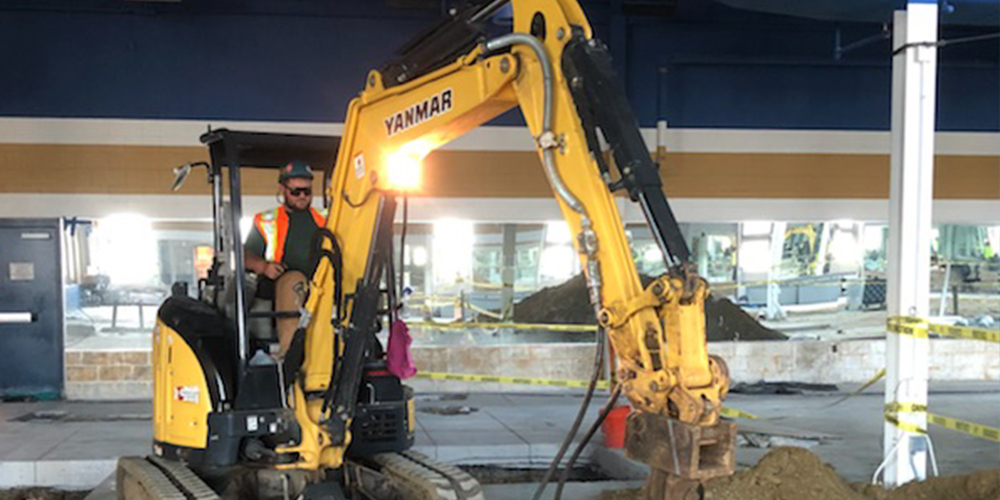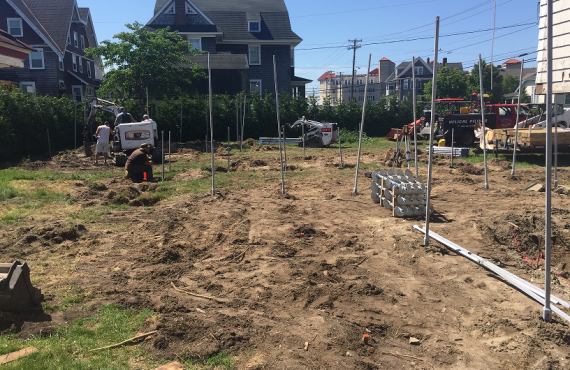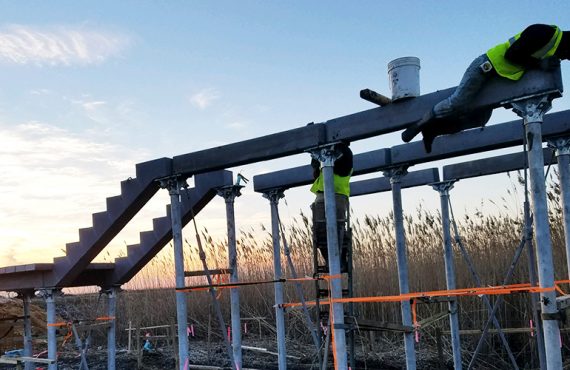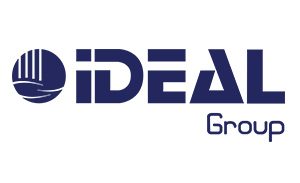Tools To Bring For Helical Pier Installation
Before joining Danbro Distributors, I worked in the metalworking industry – specifically running milling machines and lathes and stainless steel tig welding. The reason I am explaining my career history here is so that I can relay some sound advice given to me by one of the best bosses I ever worked for, which is a close second to my current.
One day, I repeatedly borrowed a plastic mallet from my boss’s toolbox. Finally, he gently but firmly said, “Nick, I don’t know if you’re aware of this, but if you need to borrow something more than twice, you should just buy it.”
With that, I immediately understood his point: I needed to be more prepared and equipped for the job he was paying me to complete. So, I went on a little shopping spree at Home Depot and acquired the tools I needed for my toolbox. So, why has this lesson stuck with me after all these years?
All too often, I hear stories from people explaining how something slowed up the job. I offer a solution and then they call back on the next project thanking me for the little tips that saved them so much time. They usually express how much more prepared they are for future jobs.
I decided to collect my answers to some of the most frequent questions I get about tools. You may already be utilizing some of these tools that I detail below. The more prepared and better equipped you are to go to work, the less downtime you will experience and that translates into more profit, because as we have all heard – time equals money.
Tools And Supplies For Helical Pier Jobs
First, I’ll outline the basic hand tools, supplies and consumables you should always have in the truck.
- Marking paint and heavy-duty sharpies or permanent markers are needed to mark out pile locations and establish cut-off heights on piles. A piece of dirt or concrete used as a rudimentary crayon mark out will not work nearly as well as the paint and markers.
- A heavy-duty claw hammer, with a steel frame, is a must. I’ve broken three wooden ones while hitting bolts through extensions or putting anchor bolts into an underpinning bracket to fasten it to a footing. You need an adjustable wrench, preferably a spud wrench with a bull pin on the other end for a handle. Because the bolt holes tend to oblong, this helps tremendously when you are taking a pipe pile to a higher torque. Having the bull pin as a handle, you can adjust the bolt holes to fasten the extensions more quickly.
- A level should be on every job. This will ensure that a vertical pile is plumb.
- An angle finder or angle gauge is required on the work truck. This is used to ensure the proper angle on a tieback or battered pile.
- A spare set of hydraulic hoses for the drive head is a good idea. We have all had a hose blow up on us on the job or get pinched and cracked while in transit to the job and then – you turn the excavator on and there is a torrential downpour of hydraulic oil.
- Spare hydraulic fittings are good to keep around for your machine and torque indicator if it needs them.
- You will want to keep a spare battery or charger for your torque indicator, spare pressure transducers if you have a Marian, and any spare parts for other torque indicators.
- Finally, be sure to inventory spare hardware for extensions and thread bar for underpinning brackets. We have all dropped a nut or bolt into the hole we were working next to or had a threaded bar with rolled threads from someone dropping it on the ground; it can take 30 minutes to get the nut past those threads.
I know many people reading this will think this is all a given. However, how many times have you gone into the toolbox on the truck and discovered something is missing? Maybe you took the level home over the weekend to hang that new flatscreen. Good housekeeping on the work truck before it goes out on a job goes a long way toward increased productivity.
Additional Considerations For Helical Pier Installers
A portable band saw for cutting piles to the correct height can speed up your installation. Some people use angle grinders and they do work, but the portable band saw is quicker, cleaner, and more accurate.
People have used gas demo saws, but that is not a safe way to cut the pile. Most major tool manufacturers like Milwaukee, Dewalt, and Bosch make these saws, so if you already own one of their cordless drills, you can buy just the saw and use the battery from the drill you own.
People also often overlook the value of a cordless battery-powered impact gun. You can put a socket on the end of the impact gun and tighten bolts much quicker than using a wrench. It may seem like an unnecessary investment at first, but if you do the math, you’ll figure out that it will pay for itself quickly as it speeds up installation time. Make sure the saw and impact gun are the same brand; then you will only have one type of battery and charger, instead of two.
Another thing to consider adding to the work truck is an oxygen acetylene cutting torch. This is extremely helpful when you are underpinning and are using steel angle under the footing; it is a quick way to cut the angle to size or make a quick adjustment.
Furthermore, if you need to achieve a minimum depth on a pile project but the helical piles are over-torqued, you can remove or trim the larger helices and potentially get that depth.
If you are two hours away from the Danbro material yard on a 10-pile job, this would be the quicker and less expensive thing to do instead of running back for a two-helix lead to replace the three-helix lead specified for the job. There is a caveat: first be sure to receive approval from the engineer.
A magnetic drill and drilling fixtures for drilling new bolt holes on piles is very valuable. We have all been on a job and heard, “Oh, by the way, the engineer wants the caps bolted.” You may be installing tiebacks and can’t get the extension behind the sheeting to attach a threaded bar adapter. You may want to pull your hair out at this moment if you are not prepared.
A magnetic drill and the right sized annular cutters to match the bolt hole size will get you out of the woods often during the installation process. Danbro can help you make a fixture for drilling new holes to help save time.
These are all tools that I have used on jobs or wished I had on a job during my career at Danbro. If you have tips or tools that have helped you out of a bad spot, feel free to share your experience with me. I would be happy to add them to the list and share with others. I hope this blog helps to prevent a few more gray hairs and heartburn.











